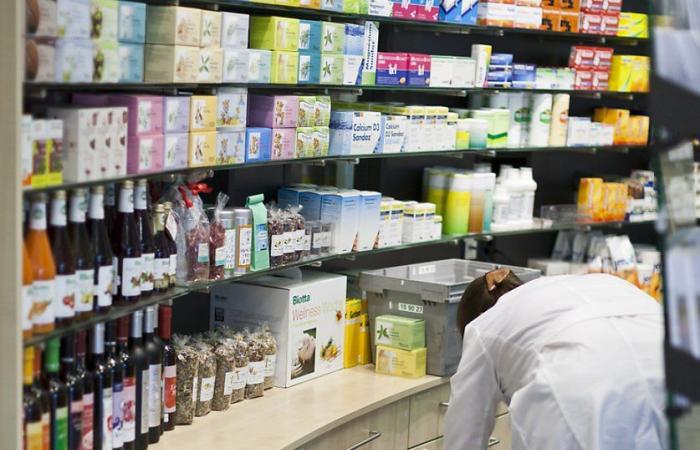The supply of medicines remains problematic in Switzerland. Identified by health professionals for more than 20 years, it took a pandemic and episodes of disruption for the general public and the political world to become aware of the phenomenon.
The search for solutions is proving difficult and supply disruptions are increasing. ZüriPharma, which manages the pharmacy at the University Hospital of Zurich, recorded fewer than 200 shortages in 2021, more than 370 in 2022 and 459 in 2023.
“The phenomenon unfortunately affects all categories of medications. Less often it is true the most recent treatments, but sometimes also still,” explains Pierre Voirol, deputy chief pharmacist at the Vaud University Hospital Center (CHUV), to the AWP agency.
The question of profitability is not unrelated to this differentiation between new treatments and products which have lost their exclusivity. “Between 700 and 5,000 francs per treatment, innovative preparations remain interesting for the industry,” explains Christoph Metzler, market manager for the logistics specialist Galexis.
“A manufacturing cost of 70 cents per package, covering the packaging, the instructions and of course the medicine, is only conceivable if production is done in India or China,” continues the representative of the subsidiary of the distributor of Galenica drugs.
Known problem
In an extremely tense system, the slightest grain of sand in the cogs at any stage of production, packaging or delivery is likely to cause a disruption in supply.
“The outbreak of war in Ukraine, a major supplier of packaging foil for tablets, severely disrupted this industry and disrupted entire supply chains, even though all of the drug components themselves were available ,” illustrates Christian Henseler, head of strategic purchasing at Zur Rose, Migros’ online apothecary.
“We have a pharmacist at CHUV who spends all of her time dealing with shortages, in addition to the impact that this phenomenon has on other employees within our department,” laments Pierre Voirol.
There are certainly alternatives to the usual supply channels, but these expedients remain largely imperfect. “University hospitals have production units that are similar to small pharmaceutical industries. But own production is not the preferred option,” underlines the hospital pharmacist.
The simplest solution is to order a product equivalent to the one missing from another supplier. The latter must still be able to make the required quantities available.
“We also have authorization to import medicines. When the instructions are in English or German there is no problem, but if labeling seems too problematic to us, in Korean or Japanese for example, our processing units production must reproduce one that is readable for our caregivers,” continues Mr. Voirol.
The delay in implementing these expedients calls for the creation of stocks of medicines. The Confederation has thus mandated the federal offices of public health (OFSP) and for the economic supply of the country (OFAE) to supervise the situation and manage compulsory reserves, only for medicines of “vital importance” however.
A plaster on a wooden leg
“The solution found in 2015 is only partial and is not enough,” denounces Enea Martinelli, pharmacist responsible for the Frutigen, Meiringen and Interlaken (FMI) hospitals and pioneer in identifying disruptions in the supply of medicines. Indeed, important medical fields are escaping the radar of the Therapeutic Products Notification Office.
“Parkinson’s disease is not included, epilepsy is not included, psychiatry is not included… and heart disease is not taken into account!” exclaims Mr. Martinelli.
He and his colleagues nevertheless welcome an awareness of the problem, admittedly late, by the authorities. “A little cynically, when the shortages were of medicines for the elderly, politicians didn’t care too much. But when it started to affect their spouses, their children – like with the shortage a year and a half ago of a pediatric formulation of ibuprofen – then it suddenly became a real problem,” tackles Mr. Voirol.
Aware of the difficulties for a small country like Switzerland to influence an issue of global scope, local actors are calling not to give up. Outline solutions exist, such as a project to relocalize the production of paracetamol in France.
ats, awp






